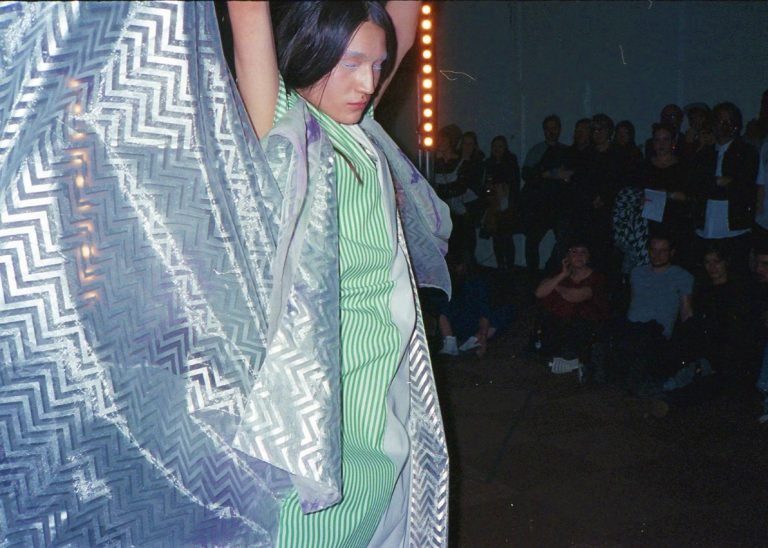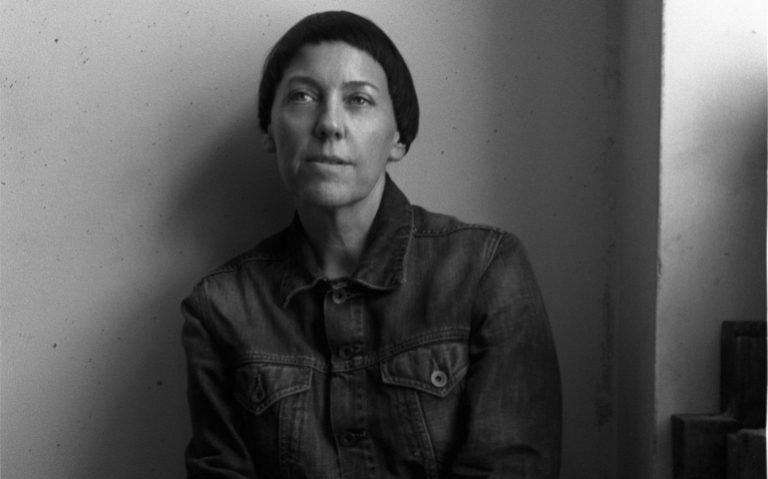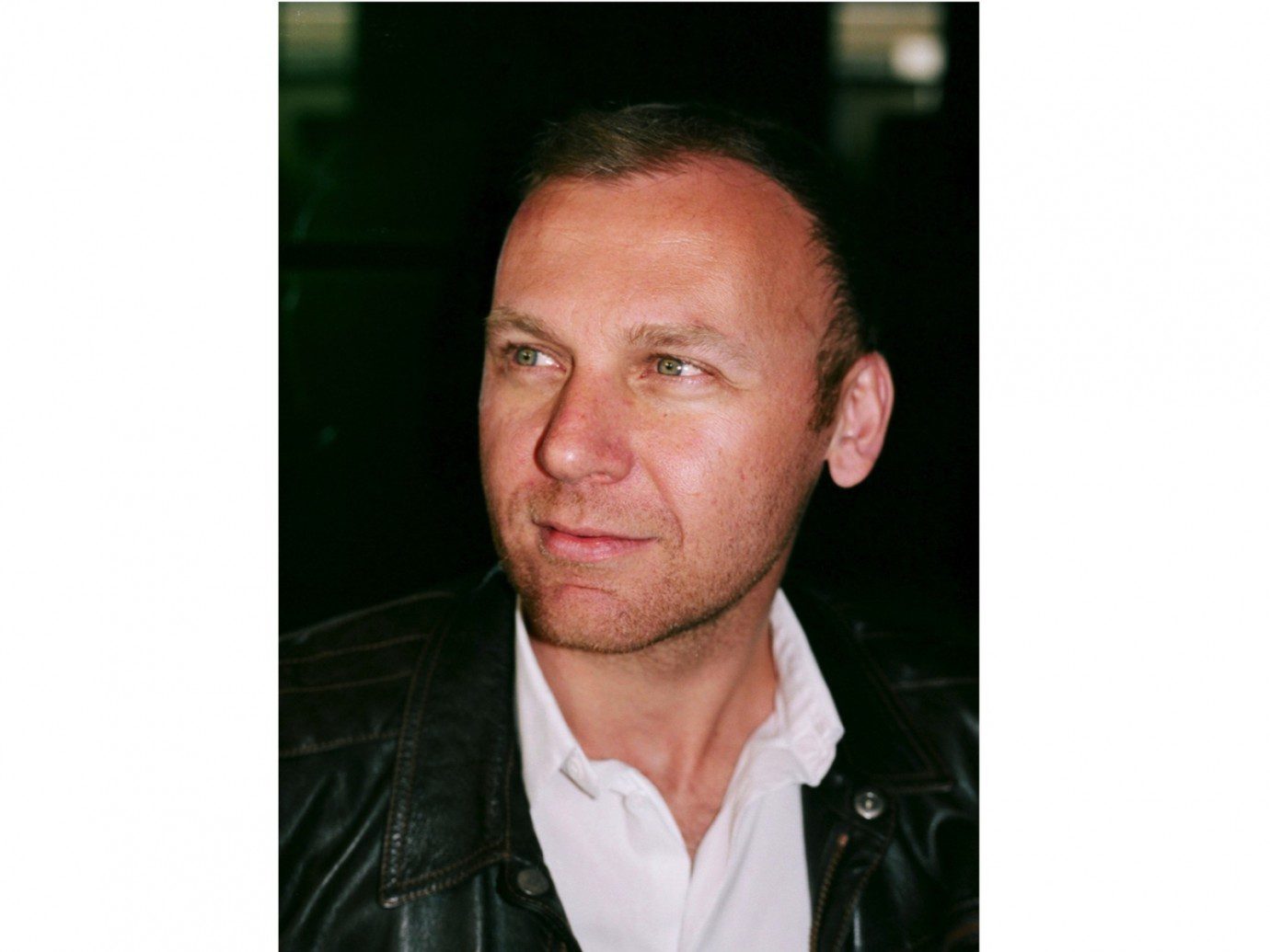I would love to hear more about your personal experience before going into education, I understood you worked for Raf Simons and Haider Ackerman at the start?
I studied in Basel myself from 1995 to ’98. At the time the course was much smaller, and we were completely free. I was very much into fashion and performance. For my final thesis, I made my models walk horizontally against the wall using climbing ropes. In this society, you need to give the audience a feeling of a changing perspective, invite them to look differently at things.
During the fifth semester, I needed to do an internship and I went to Antwerp because I was in love with a Belgian man who I met in Paris. I sent my CV to Raf Simons, who just started his label, but he never wrote me back. I must have been quite courageous because I decided to just walk into his showroom in Paris and demand an explanation. It turned out the timing was perfect: he remembered my CV and was looking for help. He didn’t even look at my portfolio, it was more about the human connection and chemistry. There was a trust about who I was as a person, and how he reacted to my presence. I am very intuitive about these things. This is how we started working together, and I would end up being his assistant for six years.
“Raf Simons taught me a holistic approach to fashion.”
I learned so much from him about vision. He always starts with the show: what atmosphere does he want to give the public, with which feeling does he want them to leave? Then he would do the research on how to get there. It was always a holistic approach, and I think this still stays with me, it works well, it’s great.
After six years I wanted to move on and start my own creation. I worked on different projects, supported by art grants and residencies. Then I got pregnant, so I thought: “Okay, this is my creation.” I had to rethink how I wanted to build my career. Working for Raf was very intense, we were like a family, we were very close. I liked it, but your work is a big part of your life.
I had become good friends with Haider Ackerman, who was studying at the academy. I helped him out late at night finishing the collection, and putting together the final touches. That was always nice in Antwerp, everyone helps each other out, so you make a lot of connections. Haider asked me if I wanted to consult for him when he started his business. We would go over the drawings together and think about the direction to take.
Looking back, I notice that I always like to be with people at the beginning of their career, where I can push creativity. It wouldn’t be interesting for me to work with Raf now. The growing process of the beginning is what I like.
“I always like to be with people at the beginning of their career, where I can push creativity.”
When I started teaching, I wasn’t sure whether I would like it, but I realised there is so much more creativity to be found in education than in the contemporary industry. With Raf at the start, in the 90s, it wasn’t really about selling, it was more about developing an image for press, etc. Communication was primordial, selling was secondary. Designers today have a different strategy, which I don’t always agree with.
With my students, I always try to push their unique point of view, their identity and what they believe in. What I notice today is that students doubt themselves so much, worrying about what others will think. It is so hard for them to take risks. It gets harder and harder. [In her review of this interview, Priska asked to have the following words added to the answer: GIVE COURAGE TO CONNECT US HOW WE LIKE TO TOUCH THE UNIVERSE, LIKE WE WOULD LOVE TO GET TOUCHED TOO]
“What I notice today is that students doubt themselves so much, worrying about what others will think.”
Why do you think that is?
Maybe they have too much information… Maybe they are too occupied with the expectations of others… They don’t trust their own instinct.
I try to teach a holistic approach to design where we combine body knowledge and design knowledge. I really believe in the importance of instinct. The harmony in the body is very important. When you’re stressed, your muscles and your entire body cramp up, and you can’t create. But when you’re in a healthy state of mind, the ideas can float smoothly. Making decisions becomes easier when you’re relaxed, which is important to students because they have to make many. I’m still researching the concept, but I believe in this more and more, especially in the age of online, where you disconnect from your body so easily.
“When you’re stressed, your muscles and your entire body cramp up, and you can’t create.”
This is fascinating. Students do face an extreme amount of pressure and work a lot through the eyes of others. Online, you only see the result of creative work, and there’s no space for the process. Our generation feels the pressure to be presenting something straight away.
I’m 50 now, but I was in an assistant position until I was 40. I learned so much from all these experiences. Where I am today wouldn’t have been possible without these experiences. Ask yourself: “What do I like doing?” Time is a gift. It also relates to the question of why we’re here, why we’re alive. When I was in the 90s, I had a lot of friends who told me I was too nice to work in fashion, that I would never make it. I told them, “this is who I am.” That is where my bodywork helped me as well. I often wondered, “should I be more bitchy?” But I just couldn’t do it. I couldn’t change myself. Now that I’m older, I trust myself much more, and I know I did the right thing.
“I often wondered, ‘should I be more bitchy?’ But I just couldn’t do it.”
But it’s different for the new generation. I had an ex-student come in recently who told me, “I’m too old to do junior design positions.” He was thirty! But the companies all want 20-somethings, because they can pay them less. I started studying fashion when I was 25, so I was 30 by the time I graduated. Most of the graduates now are 25, students are getting younger. But then you miss so much experience! I couldn’t have started fashion at such a young age. Every personality is different of course.
It’s about the opposition between what you experience and what the result looks like. It’s very limiting to focus only on where you want to be, and what that would look like, rather than “Am I enjoying this?”
Could you explain a little more about what the “Body Experiences” course entails and how it can benefit your students?
It started with Look Therapy: to change the perspective of seeing, change how you look at things, but also change how you look at a look. Therapy in Switzerland is still seen as something negative, but it basically just means healing. In fashion, I would like to change the perspective of people and give them a wellness time. The show is also a form of wellness, you feel inspired afterward, energised.
The classes are based on the practice of eutony, as developed by Gerda Alexander. In essence, it leads to the experiences and knowledge of the individual’s psychosomatic unity by developing an awareness of regions of the body which otherwise remain unconscious. The conscious work of balancing of tension, a balance which constantly renewed in contact with ourselves and our surroundings, has the effect of liberating and maturing each pupil‘s personality.
Practically, what does a class look like?
The class is really about the awareness of materials. Our skin is the biggest organ, and it is very important that you have a good contact with healthy materials, it makes the insides more balanced. I guide the students through the practice by talking. “What does the material feel like?” etc. The awareness afterward isn’t so monotone. One material they use is bamboos.
It’s just another way of drawing and expressing yourself. If you only use one way into design, you become very motoric. I want to disrupt that, I want the students to know more about the anatomy of the body as well. Students have the tendency to move away from the body for fitting, but at the end of the day, these clothes live with someone, a breathing person.
Everyone talks about sustainability from an environmental perspective, but it’s also human. We work very hard, but I couldn’t do this job if I didn’t do this bodywork. You have to know your borders. I notice students aren’t very stress-resistant.
“If you only use one way into design, you become very motoric.”
I was struck by how positive the atmosphere is here. Many students told me that is because of your guidance, they love working together, they are happy with what they’re creating. Our industry isn’t open to this at all. Is there a risk that your students might not be prepared for our industry?
Students have an obligatory semester of internships before they can graduate, and we have a lot of guest teachers who are working in the industry. We also do peer-learning, you can’t do fashion alone. I don’t believe in this star designer from the 90s, what we need today is togetherness. That doesn’t mean you shouldn’t be critical of each other’s work. We want to give students an attitude where they question what they do and why.
I’d really like to expand these ideas in a broader sense, and give the industry a “wellness” so to speak. I think there should be less design, but better design. Same goes for the media.
“There should be less design, but better design.”










